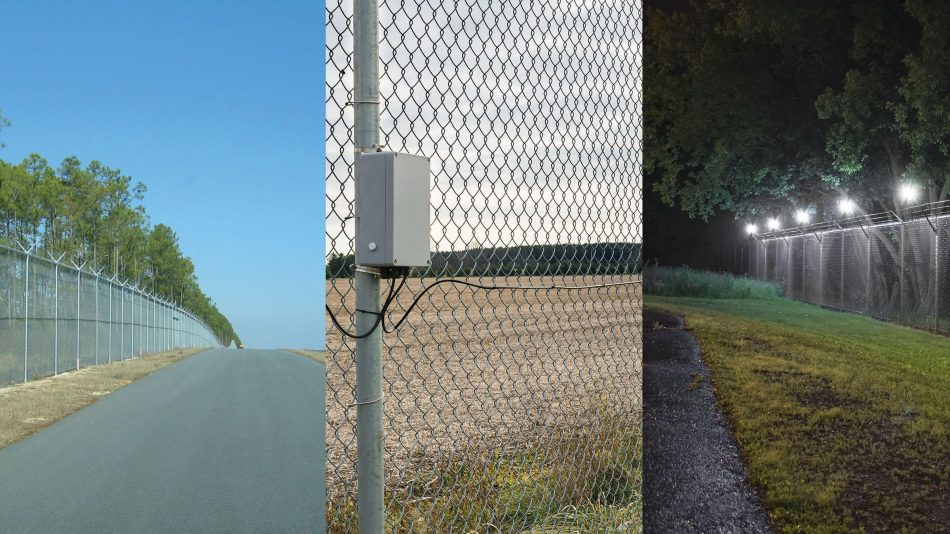The Ultimate Guide to Fiber Optic Safety Systems for Your Organization
In a period where security problems are vital for businesses, recognizing the complexities of fiber optic technology can be transformative. This overview details how integrating fiber optic protection systems not only enhances information defense yet also provides advantages like resistance to interference and real-time monitoring capabilities.
Understanding Fiber Optic Technology

The core of a fiber optic wire consists of a slim glass or plastic facility, surrounded by a cladding layer that reflects light back into the core. fiber optic security system. This style guarantees marginal loss of signal stamina, also over extensive ranges. There are 2 key kinds of fiber optic cords: single-mode and multi-mode. Single-mode fibers are made for long-distance transmission, while multi-mode fibers appropriate for much shorter distances, usually used within structures.
Fiber optics are not just quicker yet likewise extra secure than typical electrical wiring. Their inherent resistance to electromagnetic interference and the trouble of touching right into the signal without detection make them a recommended selection for services focusing on information honesty and safety and security. As companies increasingly rely upon secure and reliable interaction systems, comprehending fiber optic technology becomes important for educated decision-making.
Trick Advantages of Fiber Optic Safety And Security
When taking into consideration protection alternatives for an organization, the benefits of fiber optic systems are specifically engaging. Fiber optic technology provides exceptional information transmission rates and data transfer capability, making it suitable for dealing with high-resolution video clip feeds from security video cameras. This capability makes certain that safety and security employees get real-time information, improving overall feedback times to prospective safety risks.
Additionally, fiber optic cable televisions are naturally immune to electromagnetic interference, which can endanger the integrity of traditional copper-based systems. This resistance guarantees that the information transferred continues to be safe and continuous, providing a more reputable safety framework. Additionally, optical fiber are less vulnerable to physical damage, as they are made from glass as opposed to steel, reducing maintenance prices and downtime.
One more substantial benefit is the increased scalability of fiber optic systems. As company needs develop, fiber networks can be easily expanded to accommodate additional safety gadgets without considerable overhauls to the existing framework. Fiber optic systems provide improved cybersecurity attributes, including security abilities that shield delicate data from unauthorized access. Collectively, these benefits make fiber optic security systems a robust choice for services looking for to boost their safety measures.
Setup Process and Factors To Consider
Thinking about the intricacies involved, the setup process of fiber optic safety systems requires careful planning and execution. The first step entails an extensive site analysis to determine ideal locations for cabling and equipment. This assessment should think about environmental variables, existing framework, and potential susceptabilities.

Additionally, the setup needs to abide with neighborhood building regulations and market criteria. This might include collaborating with numerous stakeholders such as structure managers, IT teams, and security personnel to ensure smooth combination with existing systems.
Post-installation, strenuous screening is needed to validate system efficiency and identify any kind of issues that may arise. By focusing on these considerations throughout the installation procedure, businesses can guarantee a durable and efficient fiber optic security system that meets their details safety and security demands.
Most Recent Innovations in Fiber Optic Safety
Current developments in fiber optic modern technology have significantly enhanced the capacities of protection systems for services. Among one of the most significant developments is the integration of fiber optic sensors that can detect vibrations and invasions along the border of a center. These sensors offer real-time monitoring, enabling fast response to prospective breaches.
Furthermore, the advancement of dispersed fiber optic sensing modern technology enables for the continuous monitoring of large locations with a solitary fiber cable. This technique not only decreases installation costs yet likewise enhances the reliability of checking systems by eliminating the requirement for numerous, separate sensing units.
In addition, developments in multiplexing techniques have made it possible for services to send large quantities of data over fiber optic networks, enhancing the abilities of video security systems. High-def video clip feeds can currently be sent out over long ranges without loss of quality, ensuring that protection employees have access to clear and actionable details.
Last but not least, the usage of expert system (AI) combined with fiber optic systems is reinventing risk detection. AI formulas can examine data from fiber optic networks to determine unusual patterns or habits, enabling positive safety and security steps. These technologies collectively represent a substantial jump ahead in fiber optic protection modern technology.
Choosing the Right System for Your Company
Picking the appropriate fiber optic security system for your company is crucial for guaranteeing optimum defense and satisfaction. To make an enlightened choice, evaluate your details safety and security demands, thinking about elements such as the size of your premises, the nature of your operations, and possible vulnerabilities.
Begin by examining the degree of protection required; as an example, risky atmospheres might demand innovative systems with integrated security and invasion detection capabilities. Next, take into consideration scalability; as your organization expands, your safety and security system need to be qualified of expanding to fit enhanced needs without considerable overhauls.
Furthermore, examine the dependability and performance of various systems. Seek suppliers with established reputations and consumer testimonials that confirm to their solution top quality. It's additionally recommended to ask about the modern technology's compatibility with existing infrastructure, making certain a smooth integration process.
Final Thought
To conclude, fiber optic safety and security systems present a durable solution for enhancing organization safety and security infrastructures. The integration of high-speed information transmission, resistance to electro-magnetic disturbance, and advanced tracking capacities considerably boosts general defense (fiber optic security system). By recognizing the modern technology, identifying its benefits, and considering the installment procedure, companies can security fibers make educated choices. The most recent developments additionally strengthen the effectiveness of these systems, ensuring that services stay safe and adaptable in an ever-evolving risk landscape.